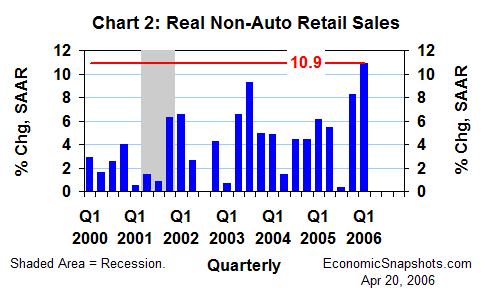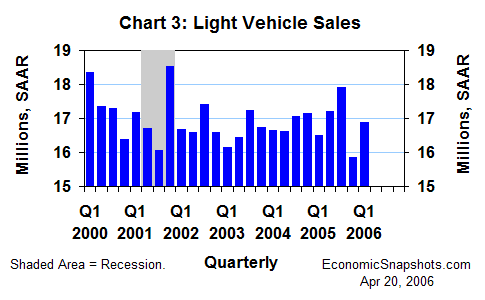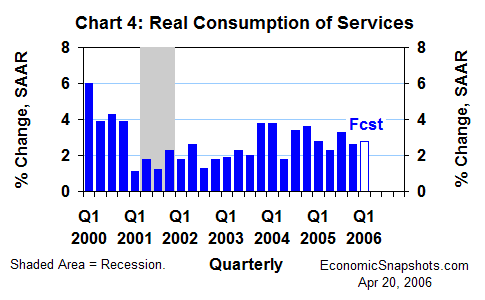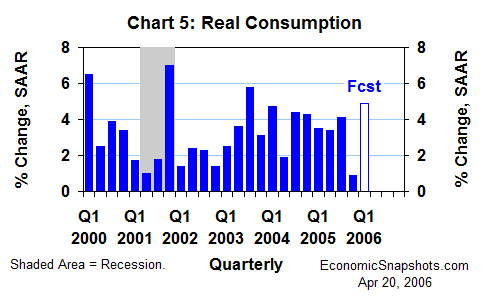
| Back to Index |
April 20, 2006 – U.S. non-auto retail sales rose by 0.4% in March, but the CPI for consumer goods rose by 0.6%. Thus, real non-auto retail sales edged down by 0.2% in March – roughly flat for the second straight month (Chart 1).

However, including January’s impressive 1.9% gain, real non-auto retail sales rose at a 10.9% annual rate in Q1 (compared to Q4) – outpacing even Q4’s big 8.2% post-hurricane bounce (Chart 2).

According to the BEA’s official tally, U.S. car and light truck sales were also flat in March, at a 16.5M unit annual rate. Nevertheless, light vehicle sales rose by 1M units for all of Q1, reversing about half of Q4’s 2.1M unit plunge (Chart 3).

In sharp contrast to the Q4 experience, sales of autos and non-auto consumer goods have followed the same general pattern in the latest data – flat in March, but up strongly for all of Q1. In Q4, those plummeting light vehicle sales reduced Q4 real consumption growth by 2.7 percentage points, more than offsetting the acceleration in Q4 demand for non-auto consumer goods.
Consumers’ less volatile real services purchases rose at a 2.8% annual rate in the first two months of Q1, about in line with Q4’s 2.6% gain (Chart 4).

Assuming that March services demand continues on its recent trend, real consumption might have edged up by 0.1% or so in March (also about flat) after edging up by 0.1% in February. Nevertheless, reflecting both a high starting point and stronger January growth, real consumption probably rose by about a 5% annual rate in Q1, rebounding from a meager 0.9% rise in Q4 (Chart 5).

Looking ahead, the FOMC expects real consumption growth to slow to a “sustainable” pace (3% to 3.5%) in Q2 and beyond. (That’s one of the conditions for ending their current tightening “program”.) The softening in real non-auto retail sales growth in February and March offers a tentative case for a slowdown. But, it typically takes at least three months to establish a new trend in these volatile monthly data.
Suzanne Rizzo